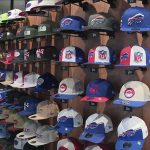In a survey released last week by Outdoor Industry Association, small businesses reported they have lowered revenue expectations, reduced inventory levels, and believe their businesses will rebound later than they expected last fall. When asked to indicate the level of concern surrounding current economic conditions affecting their business, 98% indicated they are “very” or “somewhat” concerned, up three percentage points from last fall. The level of concern was higher with vendors, where 49% signaled they are “very concerned” versus 36% of retailers. This is a marked increase in the past six months.
The industry has also extended the timeline for recovery expectations. Last fall, the majority of respondents said they expected the recovery to come in late 2009. However, based on the results of this more recent survey, that was apparently an overly optimistic view. Now, only 15% believe the recovery will take place this year. Nearly 50% believe the economy will improve in the first half of 2010, while one-fourth say the second half of 2010, and 15% believe it will not improve until after 2010.
Revenue expectations for 2009 have declined since last fall. In the fall survey, more than three-quarters of respondents projected revenues in 2009 would be above 2008. Now, only about a third expect 2009 revenue to top 2008 and nearly 25% expect revenues to decrease significantly.
In general, expectations are higher for the next three months, with just under half of respondents expecting revenues to continue declining over the next three months. Cost inflation concerns have declined since the last survey as the price of commodities and excess capacity has driven production costs lower. However, further inventory reductions are coming. More than a half of all businesses are planning inventory levels below last year.
OIA pointed out some encouraging signs in the credit markets with interest rates at historically low levels. More than three-quarters of all respondents observed no change in their ability to access capital with only a few expressing increased access to capital and 15% seeing a decrease in access to capital.









